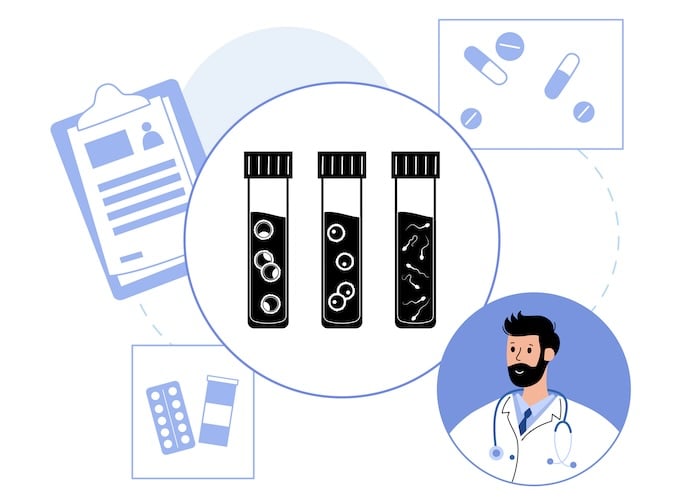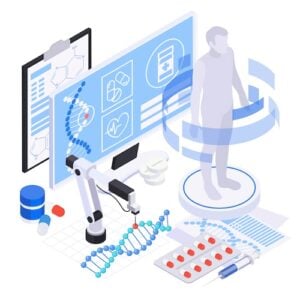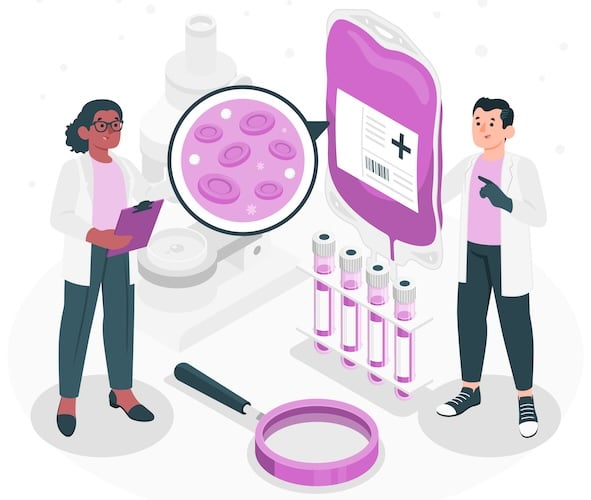Clinical trials are at the heart of medical research, responsible for the development of new treatments and therapies that save lives. Traditionally, managing these trials involved cumbersome paperwork, manual data entry, and lengthy processes susceptible to human error. As technology advanced, the industry witnessed a seismic shift from paper-based methods to sophisticated digital solutions designed to enhance efficiency, accuracy, and compliance. Understanding the clinical trial software development process is crucial for ensuring these advancements are fully leveraged.
Imagine navigating the complexities of clinical trials with a streamlined, efficient system that not only reduces errors but also accelerates the entire process. This transformation is made possible through the meticulous development and deployment of clinical trial software.
Let’s delve into the key elements that make this technology a game-changer in the world of medical research and explore how embracing it can propel your organization toward greater success.
Top Takeaways:
- Integrating clinical trial software with existing healthcare systems can be complex due to data silos and compatibility issues, requiring extensive customization and a unified data management approach.
- Clinical trial software streamlines processes, reducing errors and accelerating timelines, which is crucial for medical research advancement.
- Ensuring compliance with diverse and evolving regulations like FDA guidelines and GDPR adds a layer of complexity, necessitating built-in compliance features and continuous updates to avoid costly penalties
Table of Contents:
1. Why is Clinical Trial Management Software Important?
2. Benefits and Downsides of Clinical Trial Software
3. The Clinical Trial Software Development Dilemma
4. Essential Components and Types of Clinical Trial Software
5. Factors to Consider when Choosing the Best Clinical Trial Management Software
6. Decoding the Clinical Trial Software Development Process
7. Integrating Clinical Trial Software with Existing Healthcare Systems
8. Ensuring Data Security and Regulatory Compliance in Clinical Trial Software
9. Measuring ROI: KPIs for Clinical Trial Software Implementation
10. The Cost of Clinical Trial Software
11. Real-World Use Cases of Clinical Trial Management Software
12. Emerging Trends in Clinical Trial Management Software
13. How Topflight Addresses Clinical Trial Software Development Challenges
Why is Clinical Trial Management Software Important?
Clinical trial management software is pivotal for several reasons:
- Efficiency and Speed: By automating many trial processes, such as patient recruitment, data collection, and monitoring, clinical trial software significantly reduces the time required to conduct studies.
- Data Integrity and Compliance: Ensuring that data is accurate and adheres to regulatory standards is crucial. Software solutions minimize human errors and enhance data integrity.
- Cost-Effectiveness: While the initial investment might be significant, the long-term savings due to increased efficiency, reduced need for manual labor, and fewer errors make clinical trial software a cost-effective solution.
- Scalability: As trials become more complex, involving multiple sites and diverse patient populations, scalable software solutions can manage large volumes of data and support extensive collaboration across different geographical locations.
Key Statistics and Market Insights Shaping Clinical Trial Management Software
To appreciate the impact of clinical trial software, consider some compelling statistics:
- The global clinical trial management system (CTMS) market is projected to reach $4.7 billion by 2030 from approximately $1.85 billion in 2023.
- Anticipated to surpass $1.5 billion by 2030 in the US, driven by high clinical trial activity and supportive government regulations.
The Clinical Trial Management System (CTMS) market is experiencing significant growth, driven by advancements in healthcare IT and the increasing adoption of cloud-based solutions.
Key Drivers
- Technological Advancements: Rapid growth of healthcare IT and cloud-based solutions are major drivers. Cloud-based CTMS solutions offer scalability, flexibility, and cost-effectiveness, making them highly attractive to pharmaceutical companies, CROs, and academic institutions.
- Decentralized Clinical Trials (DCTs): The preference for decentralized trials is increasing. Companies provide solutions tailored for virtual trials, including electronic patient-reported outcomes (ePRO), remote monitoring, and electronic consent (eConsent).
- Government Initiatives: Programs such as the U.S. Advanced Research Projects Agency for Health (ARPA-H) enhance the ability to conduct clinical trials rapidly and safely.
Market Segmentation
- Components: Divided into software and services, with the software segment leading the market due to high utilization.
- Product Types: Enterprise-based CTMS holds a 74.35% revenue share, offering comprehensive solutions for centralized recruitment and resource management.
- Delivery Modes: Web-based solutions dominate, accounting for over 59% of the market share in 2021 due to their versatility.
- End-Users: Pharmaceutical and biopharmaceutical companies are expected to grow significantly, registering a healthy growth rate of 10.6% over the forecast period.
Benefits and Downsides of Clinical Trial Software
In the realm of clinical research, efficient data management and streamlined processes are paramount. Clinical trial software plays a critical role in achieving these goals but, like any technology, it comes with its own set of benefits and challenges.
Benefits of Clinical Trial Software
Enhanced Data Management and Accuracy
Clinical trial software provides robust solutions for managing vast amounts of clinical trial data, ensuring that data is accurately recorded, stored, and easily retrievable. This enhances data integrity and reduces the risk of errors associated with manual data entry.
Improved Efficiency and Speed
Automating many aspects of clinical trials—such as patient recruitment, scheduling, and monitoring—allows for more efficient processes. This not only accelerates the pace of trials but also frees up valuable time for researchers to focus on critical tasks.
Compliance and Regulatory Adherence
Maintaining compliance with regulatory standards is crucial. Clinical trial software often includes features designed to ensure adherence to regulations such as GCP (Good Clinical Practice) and FDA guidelines. This minimizes the risk of non-compliance and ensures that trials meet all required standards.
Scalability and Flexibility
Modern clinical trial software solutions are scalable, allowing organizations to manage multiple trials simultaneously across various locations. This flexibility supports the growth and expansion of clinical research initiatives without significant additional investment.
Enhanced Communication and Collaboration
These platforms facilitate better communication and collaboration among research teams, sponsors, and other stakeholders. Features such as sharing data in real time and centralized documentation improve transparency and coordination throughout the clinical trial process.
These advantages illustrate the significant benefits of integrated healthcare systems, streamlining processes and enhancing overall clinical trial efficiency.
Downsides of Clinical Trial Software
While clinical trial software offers numerous benefits, there are inherent downsides that can impact its overall efficacy and user experience.
Initial Implementation Costs
Deploying clinical trial software requires a significant upfront investment. This encompasses the cost of the software itself, hardware upgrades, staff training, and integration with existing systems. The financial burden can be substantial, particularly for smaller organizations with limited budgets.
Complexity of Integration
Integrating clinical trial software with existing healthcare IT infrastructure can be a complex and time-consuming process. Compatibility issues may necessitate extensive customization and additional resources to ensure seamless operation, potentially delaying the implementation timeline.
Learning Curve for Users
Adopting new clinical trial software involves a learning curve for all users. Ensuring that researchers, coordinators, and other stakeholders are adequately trained and comfortable with the new system can be challenging. This period of adjustment can lead to temporary inefficiencies and frustration among staff.
Data Security Risks
While clinical trial software improves data management, it also introduces risks related to data security. Protecting sensitive clinical trial data from breaches and unauthorized access requires robust security measures and continuous monitoring. Any lapse in security protocols can result in significant legal and reputational repercussions.
Dependence on Vendors
Reliance on third-party vendors for clinical trial software can create dependency issues. Organizations may face challenges related to vendor stability, ongoing support, and the potential for vendor lock-in, which can limit flexibility and control over the software in the long term.
The Clinical Trial Software Development Dilemma
In the dynamic landscape of clinical research, CIOs and VPs of Technology face a myriad of challenges when implementing clinical trial software. Let’s explore some of the critical issues that can significantly impact the development and deployment process while also identifying opportunities for improvement.
Data Silos and Integration Challenges
One of the foremost dilemmas is the existence of data silos within research sites. When patient data is fragmented across various systems, it hinders seamless communication and data sharing. This fragmentation can lead to inefficiencies and errors, ultimately compromising the integrity of clinical studies.
Solution: Unified Data Management
To combat this, focusing on integrating clinical trial software with existing healthcare IT infrastructure is essential. A unified data management system ensures all relevant data is accessible from a single platform, improving collaboration and data accuracy.
Regulatory Compliance
Navigating the complex web of regulatory requirements is another significant hurdle. Ensuring that clinical trial software complies with local and international standards, such as FDA guidelines, GDPR, and HIPAA, can be daunting. Non-compliance can lead to costly penalties and delays in the approval process.
Solution: Built-in Compliance Features
Incorporating built-in compliance features within the software can help automate adherence to regulatory standards. Regular updates and audits ensure compliance of the software with evolving regulations.
Scalability and Adaptability
As clinical trials grow in scale and complexity, the software must adapt accordingly. Ensuring the software can handle increasing volumes of patient data, multiple research sites, and diverse clinical studies is crucial for long-term success.
Solution: Modular Design
Adopting a modular design allows for scalable solutions that can be tailored to specific needs. This flexibility ensures that the software can evolve with the growing demands of clinical research.
Cost and Resource Management
Budget constraints are a common challenge. The initial investment in clinical trial software, along with ongoing maintenance and training costs, can strain financial resources. Balancing this expenditure with the potential benefits requires careful planning and justification.
Solution: Clear ROI Metrics
Implementing clear ROI metrics helps justify the investment. By demonstrating how the software can lead to cost reductions, improved efficiency, and better patient outcomes, decision-makers can make informed budgetary decisions.
Specode, our AI-driven framework, revolutionizes custom healthcare software development, making it easier than ever to create advanced clinical trial software with speed and precision.
User Adoption and Training
Introducing new software often comes with a learning curve. Ensuring that all stakeholders, from researchers to administrative staff, are adequately trained and comfortable with the new system can be time-consuming and resource-intensive.
Solution: Comprehensive Training Programs
Developing comprehensive training programs that include hands-on sessions, user manuals, and continuous support can ease the transition. Encouraging feedback and iterative improvements based on user experience enhances adoption rates.
Time-to-Market Pressure
Speed is critical in clinical studies. Delays in the software development process can push back trial timelines, affecting market entry and competitive advantage.
Solution: Agile Development Methodologies
Utilizing agile development methodologies can accelerate the development process. By breaking down the project into smaller, manageable phases, teams can adapt to changes quickly and deliver functional software more rapidly.
Quality and Reliability
Ensuring that the clinical trial software is robust and reliable is non-negotiable. Any glitches or downtime can disrupt clinical studies and compromise data integrity.
Solution: Rigorous Testing Protocols
Implementing rigorous testing protocols, including automated and manual testing, ensures that the software meets high-quality standards. Continuous monitoring and regular updates help maintain reliability.
Vendor Management
Selecting the right vendor is crucial, as it impacts not only the implementation but also long-term support and upgrades. Dependency on a third-party vendor can pose risks if the vendor’s stability or service quality declines.
Solution: Strategic Partnerships
Forming strategic partnerships with reputable vendors who have a proven track record in clinical trial software can mitigate these risks. Clear SLAs (Service Level Agreements) and regular performance reviews ensure consistent support.
Innovation and Staying Current
The rapid pace of technological advancements means that clinical trial software must continually evolve to stay relevant. Keeping up with new features, technologies, and methodologies can be overwhelming.
Solution: Continuous Innovation Framework
Adopting a framework for continuous innovation ensures that the software remains cutting-edge. Regularly updating the software with new features and incorporating feedback from end-users keeps the technology aligned with industry trends.
Change Management
Implementing new software necessitates change management strategies to address resistance and ensure smooth transition. Effective communication and leadership are key to guiding teams through the transformation.
Solution: Proactive Change Management
Proactively managing change through clear communication, involving key stakeholders in decision-making, and addressing concerns early on can facilitate a smoother implementation process.
Essential Components and Types of Clinical Trial Software
Understanding the core components and types of software is crucial for anyone involved in clinical trial software development. By breaking down each module, clinical CIOs and VPs of Technology can better grasp what features are crucial for improving clinical trial operations, ensuring high data quality, and streamlining document management.
Electronic Data Capture (EDC) Systems
EDC systems are pivotal for capturing and managing clinical data efficiently. These systems help ensure data integrity and compliance.
- Real-time data entry and validation
- Remote data access for monitoring and analysis
- Audit trails for regulatory compliance
- Customized forms and data fields
- Integration with other clinical trial systems
Clinical Trial Management System (CTMS)
CTMS centralizes trial management activities, enhancing operational efficiency and oversight.
- Study planning and tracking
- Site management and monitoring
- Budgeting and financial tracking
- Patient recruitment and enrollment management
- Reporting and analytics
Randomization and Trial Supply Management (RTSM)
RTSM solutions ensure the proper allocation of treatments and management of trial supplies.
- Randomization schemes and algorithms
- Inventory management and tracking
- Drug supply chain management
- Compliance with blinding requirements
- Real-time inventory updates
Document Management Systems (DMS)
DMS provides a secure platform for managing all trial-related documents, ensuring accessibility and compliance.
- Centralized document repository
- Version control and document tracking
- Secure access and permissions
- Document workflow automation
- Regulatory submission management
Clinical Metadata Repositories (CMDR)
Manages metadata associated with clinical trials, ensuring consistency and standardization of data across different studies.
Safety Management Systems
Safety management systems focus on the reporting and tracking of adverse events to ensure patient safety.
- Adverse event tracking and reporting
- Safety data integration
- Compliance with safety regulations
- Signal detection and risk management
- Automated safety notifications
eConsent Platforms
eConsent platforms digitize the consent process, improving participant understanding and compliance.
- Interactive consent forms
- Multi-language support
- Real-time consent tracking
- Integration with EDC and CTMS
- Compliance with regulatory requirements
Understanding these components can empower decision-makers to select and implement the right clinical trial software, optimizing clinical trial operations and ensuring robust data quality. And leveraging advanced features in your software can help you to grow a medical practice by enhancing operational efficiency and patient satisfaction.
Factors to Consider when Choosing the Best Clinical Trial Management Software
Selecting the right clinical trial management software can significantly impact trial efficiency, data integrity, and patient care. Here are some key factors to consider:
- Trial Information Management
- Centralized repository for all trial-related data
- Easy access and retrieval of trial documents
- Data Capture and Validation
- Robust electronic data capture (EDC) systems
- Automated data validation checks
To ensure seamless data flow, it’s crucial to thoughtfully choose an EHR system that aligns with your clinical trial software requirements.
- Patient Care and Engagement
- Patient recruitment and retention tools
- User-friendly patient portals and mobile apps
- Clinical Metadata Management
- Efficient handling of clinical metadata
- Integration with other clinical systems
- Scalability and Flexibility
- Ability to handle multiple trials and large datasets
- Customizable features to meet specific trial needs
- Data Security and Compliance
- Adherence to regulatory standards (e.g., FDA, GDPR)
- Strong security measures to protect sensitive data
- Vendor Support and Reliability
- Reliable customer support and training services
- Proven track record in the life sciences industry
Choosing the best clinical trial management software involves evaluating these factors to ensure it meets your organization’s needs, enhances trial efficiency, and supports high-quality patient care.
Decoding the Clinical Trial Software Development Process
Navigating the clinical trial software development process can be a complex journey, especially for clinical CIOs and VPs of Technology. This section breaks down each phase to provide a clear roadmap for successfully developing robust and compliant clinical trial software.
The clinical trial software development process involves six key steps that guide organizations from initial planning to ongoing maintenance, ensuring robust and compliant software solutions.
| Steps | Description | Key Activities |
|---|---|---|
| 1. Planning | Lays the foundation for the project with clear goals and feasibility analysis. |
|
| 2. Design | Creates a blueprint for the software solution to meet user needs. |
|
| 3. Development | Involves coding, integration, and iterative testing to build the software. |
|
| 4. Testing | Ensures software reliability, performance, and compliance. |
|
| 5. Deployment | Rolls out the software to the live environment with user training. |
|
| 6. Maintenance and Updates | Ensures the software stays functional, compliant, and up-to-date. |
|
Step 1: Planning
Effective planning lays the foundation for a successful project. It involves:
- Needs Assessment: Identifying specific requirements and goals.
- Stakeholder Engagement: Involving all relevant parties from the outset.
- Feasibility Study: Evaluating technical and financial viability.
- Project Charter: Documenting scope, timelines, and resources.
Step 2: Design
The design phase focuses on creating a blueprint for the software solution.
- User Requirements Specification (URS): Detailing user needs and expectations.
- System Design Specification (SDS): Outlining the architecture and components.
- Wireframing and Prototyping: Creating visual representations of the software.
- Usability Testing: Ensuring the design meets user requirements and is intuitive.
Step 3: Development
During development, the actual coding and construction of the software take place.
- Agile Methodologies: Employing iterative development cycles for flexibility.
- Modular Coding: Building independent, reusable modules.
- Integration: Ensuring compatibility with existing systems and workflows.
- Continuous Testing: Implementing unit tests and integration tests throughout development.
Ensure that you partner with a reliable healthcare app developer that understands the intricacies of clinical trials and can seamlessly integrate your software with existing systems and workflows.
Step 4: Testing
Comprehensive testing is crucial to ensure software reliability and compliance.
- Functional Testing: Verifying that all features work as intended.
- Performance Testing: Assessing the software’s responsiveness and stability.
- Security Testing: Ensuring data protection and regulatory compliance.
- User Acceptance Testing (UAT): Confirming the software meets end-user needs.
Step 5: Deployment
Deployment involves rolling out the software to the live environment.
- Pilot Launch: Initiating a small-scale launch to identify potential issues.
- Full Rollout: Deploying the software across all intended sites.
- Training and Support: Providing comprehensive training and ongoing support to users.
Step 6: Maintenance and Updates
Post-deployment, continuous maintenance and updates are necessary to ensure long-term success.
- Monitoring and Feedback: Collecting user feedback and monitoring performance.
- Bug Fixes and Enhancements: Addressing issues and adding new features.
- Compliance Updates: Keeping the software aligned with evolving regulations.
Understanding the medical trial software development process helps you navigate each phase effectively, from initial planning through to maintenance. By following this structured approach, organizations can ensure they develop robust, compliant, and user-friendly solutions.
As you plan the development stages, you might also explore how to create a telehealth app to enhance patient engagement and remote monitoring capabilities.
Integrating Clinical Trial Software with Existing Healthcare Systems
Integrating new clinical trial software with existing healthcare IT infrastructure is a critical challenge that CIOs and VPs of Technology must address to ensure seamless operations and data management. The key integration strategies include:
- API Utilization: Leverage APIs (Application Programming Interfaces) to facilitate smooth data exchange between your new clinical trial software and existing systems. This enables real-time data sharing and reduces manual entry errors.
- Data Standardization: Ensure that clinical trial data formats are standardized across all platforms. Consistent data structures make it easier to integrate and analyze information from various sources, enhancing the efficiency of your health trial software development.
- Interoperability Testing: Conduct comprehensive interoperability tests to identify and resolve potential conflicts between the new software and existing systems. This proactive approach minimizes downtime and ensures a smoother implementation process. When considering the interoperability of your clinical trial software, don’t overlook the potential benefits of EHR PointClickCare integration, which can streamline patient data management.
- User Training: Provide training for staff to familiarize them with integrated workflows. Clear understanding of how the new system interacts with existing tools enhances productivity and reduces resistance to change.
- Vendor Collaboration: Work closely with software vendors to troubleshoot integration issues and customize solutions according to your organization’s unique needs. Strong vendor support can significantly streamline the integration process.
Ensuring Data Security and Regulatory Compliance in Clinical Trial Software
Data security and regulatory compliance are paramount concerns for healthcare executives when implementing a new CTMS solution. Failure to address these issues can lead to significant legal and financial repercussions.
Encryption Standards
Implement robust encryption standards, such as AES-256, to protect sensitive clinical trial data both at rest and in transit. This ensures that patient information remains secure from unauthorized access.
Access Controls
Utilize role-based access controls to limit data access based on user roles and responsibilities. This minimizes the risk of data breaches and ensures that only authorized personnel can view or modify sensitive information.
Compliance Audits
Regularly conduct compliance audits to ensure that your CTMS solution meets industry regulations such as HIPAA, GDPR, and FDA guidelines. Audits help identify potential compliance gaps and provide an opportunity for corrective actions.
Incorporating EHR in medical billing within your clinical trial software can significantly improve financial tracking and compliance.
Incident Response Plan
Develop a comprehensive incident response plan to quickly address data breaches or security incidents. A well-defined plan ensures that your organization can respond promptly and effectively to mitigate any damage.
Continuous Monitoring
Implement continuous monitoring tools to track system activity and detect unusual behavior patterns. Real-time alerts enable immediate intervention, reducing the risk of significant data security breaches.
By addressing these considerations, you can ensure that your clinical trial software not only complies with relevant regulations but also maintains the highest standards of data security, safeguarding both patient information and your organization’s reputation.
Measuring ROI: KPIs for Clinical Trial Software Implementation
Evaluating the return on investment in clinical trial software is crucial. Understanding which KPIs to track can provide valuable insights into the effectiveness and efficiency of your medical trial software development efforts. Here is the list of the KPIs to measure:
-
Time-to-Market
-
-
- Metric: Reduction in the overall time taken to bring a drug or treatment to market.
- Significance: Faster time-to-market can lead to earlier revenue generation and competitive advantage.
-
-
Cost Savings
-
-
- Metric: Decrease in operational costs associated with manual data entry, monitoring, and reporting.
- Significance: Lower operational costs contribute directly to improved bottom-line performance.
-
-
Data Accuracy and Quality
-
- Metric: Reduction in data discrepancies and errors.
- Significance: High data quality ensures reliable trial results and regulatory compliance, reducing the risk of costly rework.
-
Patient Enrollment and Retention Rates
-
-
- Metric: Increase in patient enrollment speed and retention rates throughout the trial.
- Significance: Efficient patient management leads to more robust trials and faster completion times.
-
-
Regulatory Compliance
-
-
- Metric: Number of compliance issues or regulatory flags reported.
- Significance: Ensuring compliance reduces the risk of legal penalties and trial delays.
-
-
User Adoption and Satisfaction
-
-
- Metric: User satisfaction scores and system adoption rates among staff.
- Significance: A high adoption rate indicates the software is user-friendly and meets the needs of its users.
-
-
Operational Efficiency
-
-
- Metric: Improvement in workflow efficiency, such as reduced time for data entry and document management.
- Significance: Enhanced efficiency leads to higher productivity and lower costs.
-
-
System Uptime Ratio
-
-
- Metric: Percentage of time the clinical trial software is operational and accessible.
- Significance: Higher uptime ratios ensure continuous access to critical trial information and reduce disruptions in trial operations.
-
-
Ratio of IT Incidents per Employee
-
-
- Metric: Number of IT-related incidents reported per employee.
- Significance: Lower incident ratios indicate a stable and reliable IT environment, contributing to smoother trial operations.
-
-
Return on Investment (ROI)
-
- Metric: Overall financial return generated from the implementation of the software compared to its cost.
- Significance: A favorable ROI demonstrates the financial viability and success of the software investment.
Tracking these KPIs will provide a comprehensive view of how well your clinical trial software development project is performing. By focusing on these metrics, you can make data-driven decisions that enhance trial efficiency, reduce costs, and ultimately improve patient outcomes.
The Cost of Clinical Trial Software
While the investment in clinical trial software can be substantial, the long-term benefits often outweigh the initial expenses. Here’s a breakdown of the costs to help you plan and budget effectively:
Initial Development Costs
Initial development costs encompass discovery, coding, testing, project management, and more. On average, these expenses total around $120,000. Notably, with this investment, you don’t have to pay for each user individually, and you have the potential to monetize the solution further by offering it via a SaaS model to other organizations.
Recurring Costs
For SaaS-based solutions, recurring costs range from $25 to $400 per user per month, depending on the subscription plan and features required. Unlike custom development, these recurring costs eliminate the need for upfront development expenses.
Factors Influencing Costs
-
Scope and Complexity
-
-
- More complex systems with advanced features, such as AI-driven analytics or telemedicine integration, will naturally incur higher development costs.
-
-
Regulatory Compliance
-
-
- Ensuring that the software meets regulatory standards (e.g., HIPAA, GDPR) adds to the cost due to the necessary data security measures and audit trails.
-
-
Customization and Scalability
-
-
- Customizable and scalable solutions designed to meet specific trial needs and accommodate growth will increase overall costs but offer significant long-term value.
-
-
Interoperability
-
-
- Integrating the new software with existing systems like EHRs or laboratory information systems requires additional development efforts, contributing to higher costs.
-
-
User Interface (UI) and User Experience (UX)
-
- Designing intuitive and user-friendly interfaces requires significant investment in user research and iterative improvements to ensure ease of use and adoption.
Investing in clinical trial software also paves the way for opportunities to develop an EHR/EMR system, further enhancing interoperability and data management capabilities.
Read more on medical device clinical trials and medical device software development.
Real-World Use Cases of Clinical Trial Management Software
One remarkable example is the implementation of a CTMS at the Medical University of South Carolina (MUSC). The Medical University of South Carolina (MUSC) faced challenges in managing its diverse and complex clinical trials. To address these issues, MUSC implemented a CTMS integrated with its Research Integrated Network of Systems (RINS). The results were transformative.
Key Achievements:
- Enhanced Efficiency: Within the first year, the CTMS managed 324 protocols and enrolled over 2,600 participants. The streamlined operations significantly reduced administrative burdens and improved overall trial efficiency.
- Improved Patient Accrual: The integration enabled near-real-time assessment of patient accrual, allowing for quicker identification and enrollment of eligible participants. This not only sped up the trial process but also enhanced the accuracy of patient data management.
- Accelerated Reimbursement: The system’s ability to provide real-time data and comprehensive financial tracking led to accelerated reimbursement from industry sponsors. This improvement in financial management contributed to better cash flow and sustainability of the trials.
- Financial Performance: By enhancing operational efficiency and enabling precise financial tracking, the CTMS improved the financial performance of clinical trials. The system provided clear visibility into budget utilization, cost management, and financial outcomes.
The successful implementation of a CTMS at MUSC underscores the significant impact that advanced clinical trial management systems can have on research institutions. By integrating a robust CTMS with existing systems like RINS, healthcare organizations can achieve remarkable improvements in efficiency, patient management, and financial performance.
Dive deeper into AI in nursing burnout to explore how technology supports healthcare professionals.
Emerging Trends in Clinical Trial Management Software
In the rapidly evolving landscape of clinical trial management, staying updated with emerging trends is crucial for decision makers. Here are some key trends to watch:
- AI and Machine Learning Integration
- Enhances data analysis, patient recruitment, and predictive analytics.
- Blockchain for Data Security
- Ensures tamper-proof data integrity, enhancing regulatory compliance and trust.
- Virtual and Decentralized Trials
- Expands access to diverse patient populations and reduces logistical barriers.
- Wearable Technology
- Facilitates real-time patient monitoring and data collection outside clinical settings.
- Cloud-Based Solutions
- Offers scalability, flexibility, and cost-effectiveness in managing trial data and processes.
- Patient-Centric Platforms
- Prioritizes user-friendly interfaces and patient engagement tools to improve trial participation.
- Advanced Data Analytics
- Utilizes big data to optimize trial design, site selection, and patient outcomes.
How Topflight Addresses Clinical Trial Software Development Challenges
At Topflight, we understand the unique challenges faced by decision-makers in the development and deployment of clinical trial software. Our expertise in medical and healthcare software development is demonstrated through our successful collaborations with leading institutions and companies. Here’s how we address these challenges:
Ensuring Compliance and Data Security
Case Study: iFaint App
Our work with Medable through the Stanford University School of Medicine on the iFaint study involved developing a HIPAA-compliant custom dashboard for iOS and Android. This app visualizes data collected from wearable devices tracking participants’ heart rates. By leveraging Healthkit and Google Fit, we ensured secure and compliant data integration.
- HIPAA Compliance: Strict adherence to regulations ensures data security and patient privacy.
- Cross-Platform Integration: Seamlessly integrating with both iOS and Android ecosystems via Healthkit and Google Fit.
Enhancing Real-Time Data Visualization and Analysis
Case Study: Fortune 100 Pharmaceutical Company (see project #2)
We partnered with a Fortune 100 pharmaceutical company to design and develop a dashboard for visualizing and analyzing remote clinical trial study results. Using the Medable Axon App and API, along with IoT devices (a smart flowmeter and a smart pillbox), we created a real-time data visualization dashboard that provided comprehensive insights to clinical trial managers.
- IoT Integration: Integrating smart devices for real-time data collection and analysis.
- Rapid Development: Completed the project in just two months, emphasizing our efficiency and expertise.
- Data-Driven Insights: Empowering trial managers with actionable data to make informed decisions quickly.
Facilitating Patient Engagement and Data Accuracy
Case Study: Patient Registry & Symptom Tracking App
Topflight collaborated with Solve ME, the largest non-profit fighting chronic fatigue syndrome (CFS), Long COVID, and other post-infection diseases, to create a patient registry and symptom tracking app aimed at improving patient engagement and data accuracy. This mobile application enables patients to self-report symptoms and participate in research studies, providing researchers with high-quality, real-time data through a web dashboard.
- Patient-Centric Design: Easy-to-use interface encourages patient participation and accurate self-reporting.
- Real-Time Data Collection: Immediate access to patient-reported data enhances the quality and timeliness of research insights.
- Enhanced Research Outcomes: Improved data accuracy leads to more reliable and actionable research findings.
Facilitating User Adoption and Training
To ensure high user adoption rates, we focus on designing intuitive and user-friendly interfaces. Our solutions come with comprehensive training programs tailored to the specific needs of healthcare professionals, ensuring smooth onboarding and effective use of the software.
Addressing Scalability and Customization
Our solutions are designed to be scalable and customizable, allowing them to grow with your organization’s needs. Whether it’s integrating advanced features like AI-driven analytics or ensuring interoperability with existing systems, we provide flexible solutions that align with your business goals.
Managing Cost and Resources Efficiently
Topflight’s approach includes detailed planning and transparent communication, ensuring that all stakeholders are aligned on project goals and budgets. By leveraging our extensive experience and proven methodologies, we deliver cost-effective solutions without compromising on quality or functionality.
Topflight’s track record in addressing the complex challenges of clinical trial software development speaks for itself. Whether it’s ensuring compliance, enhancing data visualization, engaging patients, or facilitating user adoption, we have the expertise and experience to deliver solutions that meet your needs. By partnering with us, you can expect increased efficiency, streamlined workflows, and improved bottom line performance.
Frequently Asked Questions
What is a Clinical Trial Management Systtem (CTMS)?
A CTMS is software designed to streamline the planning, tracking, and management of clinical trials, enhancing efficiency and data accuracy.
Wy is CTMS important in clinical trials?
CTMS improves trial efficiency, compliance, and data quality by automating processes, managing patient recruitment, and providing real-time data insights.
How are regulatory compliance and clinical trials solutions ensured?
Compliance is ensured through adherence to industry regulations like HIPAA, utilizing secure data protocols, and conducting regular audits.
What are the challenges of deploying a new clinical trial software?
Challenges include user adoption, data migration, integration with existing systems, and ensuring regulatory compliance.
How do clinical trial platforms enhance patient engagement and retention?
They offer user-friendly interfaces, real-time symptom tracking, and personalized feedback, making participation easier and more engaging for patients.
Is clinical trial software safe and secure?
Yes, clinical trial software employs advanced security measures like encryption, access controls, and compliance with data protection regulations to ensure safety.
Can clinical trial software integrate with other systems?
Absolutely. Modern clinical trial software is designed to seamlessly integrate with existing healthcare IT systems and platforms.











